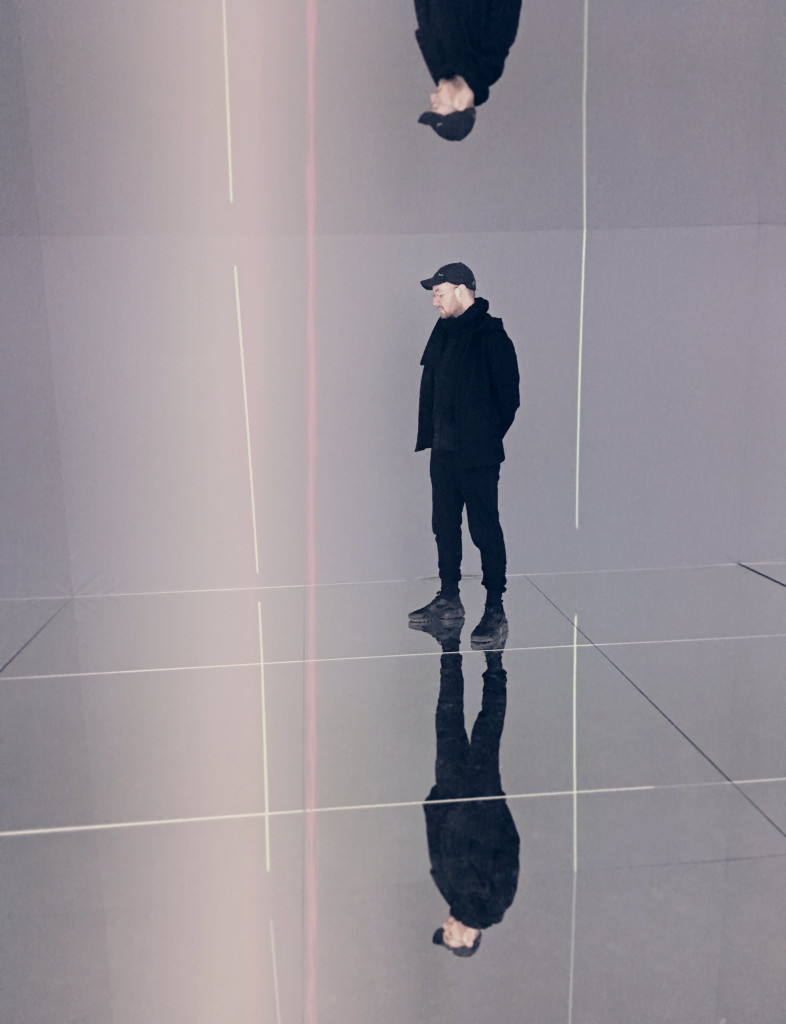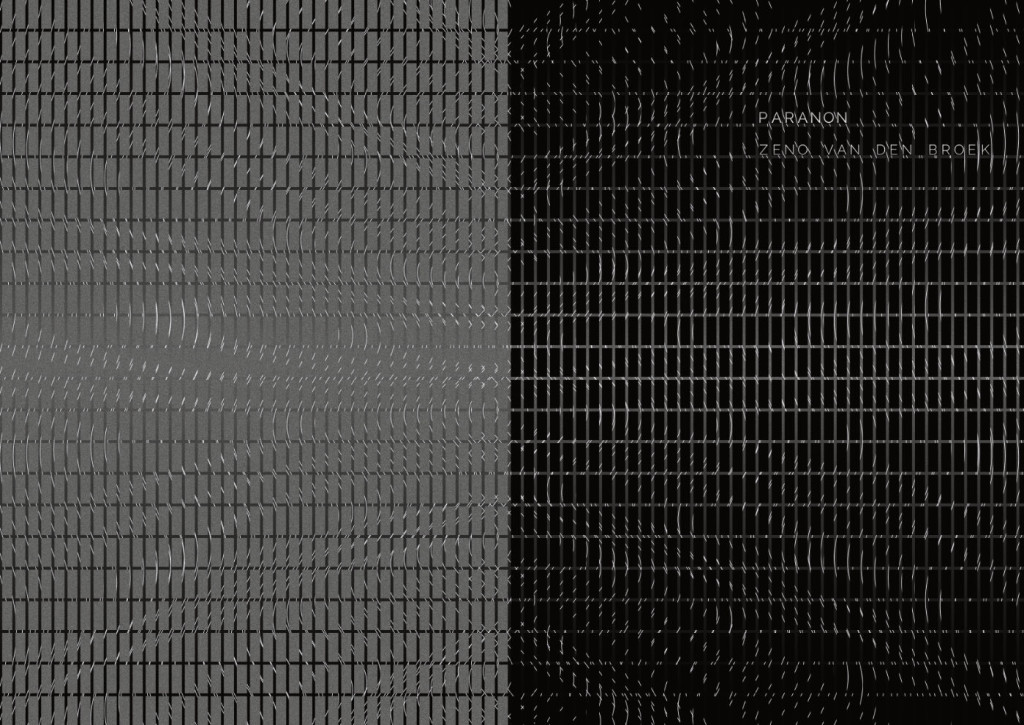Dutch-born, Danish-based audiovisual artist Zeno van den Broek continues to enchant with his immersive, minimalistic constructions. We talk to him about how his work clicks.
Zeno had a richly entrancing audiovisual release with our Establishment label in late 2016, Shift Symm. But he’s been prolific in his work for AV sound, with structures made of vector lines in sight and raw, chest rattling sine waves. It’s abstract an intellectual in the sense of there’s always a clear sense of form and intent – but it’s also visceral, both for the eyes and ears, as these mechanisms are set into motion, overlapping and interacting. They tug you into another world.
Zeno is joining a lineup of artists around our Establishment label tonight in Berlin – come round if you see this in time and happen to be in town with us.
But wherever you are, we want to share his work and the way he thinks about it.
CDM: So you’ve relocated from the Netherlands to Copenhagen – what’s that location like for you now, as an artist or individually?
Zeno: Yes, I’ve been living there for little over two years now; it’s been a very interesting shift both personally and workwise. Copenhagen is a very pleasant city to live in – it’s so spacious, green and calm. For my work, it took some more time to feel at home, since it’s structured quite differently from Holland, and interdisciplinary work isn’t as common as in Amsterdam or Berlin. I’ve recently joined a composers’ society, which is a totally new thing to me, so I’m very curious to see where this will lead in the future. Living in such a tranquil environment has enabled me to focus my work and to dive deeper into the concepts behind my work, it feels like a good and healthy base to explore the world from, like being in Berlin these days!
Working with these raw elements, I wonder how you go about conceiving the composition. Is there some experimentation process, adjustment? Do you stand back from it and work on it at all?
Well, it all starts from the concepts. I’ve been adapting the ‘conceptual art’ practise more and more, by using the ideas as the ‘engine’ that creates the work.
For Paranon, this concept came to life out of the desire to deepen my knowledge of sine waves and interference, which always play a role in my art but often more in an instinctive way. Before I created a single tone of Paranon I did more research on this subject and discovered the need for a structural element in time: the canon, which turned out to a very interesting method for structuring sine wave developments and to create patterns of interference that emerge from the shifting repetitions.
Based on this research, I composed canon structures for various parameters of my sine wave generators, such as frequency deviation and phase shifting, and movements of visual elements, such as lines and grids. After reworking the composition into Ableton, I pressed play and experienced the outcome. It doesn’t make sense to me to do adjustments or experiment with the outcome of the piece because all decisions have a reason, related to the concept. To me, those reasons are more important than if something sounds pleasant.
If I want to make changes, I have to go back to the concept, and see where my translation from concept to sound or image can be interpreted differently.

There’s such a strong synesthetic element to how you merge audio and visual in all your works. Do you imagine visuals as you’re working with the sound? What do they look like?
I try to avoid creating an image based on the sound. To me, both senses and media are equally important, so I treat them equally in my methods, going from concept to creation. Because I work with fundamental elements in both the visuals and the sound — such as sine waves, lines, grids, and pulses — they create strong relationships and new, often unexpected, results appear from the merging of the elements.
Can you tell us a bit about your process – and I think this has changed – in terms of how you’re constructing your sonic and visual materials?
Yes, that’s true; I’ve been changing my tools to better match my methods. Because of my background in architecture, drawing was always the foundation of my work — to form structures and concepts, but also to create the visual elements. My audiovisual work Shift Symm was still mainly built up out of animated vector drawings in combination with generative elements.
But I’ve been working on moving to more algorithmic methods, because the connection to the concepts feels more natural and it gives more freedom, not being limited by my drawing ability and going almost directly from concept to algorithm to result. So I’ve been incorporating more and more Max in my Ableton sets, and I started using [Derivative] TouchDesigner for the visuals. So Paranon was completely generated in TouchDesigner.
You’ve also been playing out live a lot more. What’s evolving as you perform these works?
Live performances are really important to me, because I love the feeling of having to perform a piece on exactly that time and place, with all the tension of being able to f*** it up — the uncompromising and unforgiving nature of a performance. This tension, in combination with being able to shape the work to the acoustics of the venue, make a performance into something much bigger than I can rationally explain. It means that in order to achieve this I have to really perform it live: I always give myself the freedom to shape the path a performance takes, to time various phrases and transitions and to be able to adjust many parameters of the piece. This does give a certain friction with the more rational algorithmic foundation of the work but I believe this friction is exactly what makes a live performance worthwhile.
So on our release of yours Shift Symm, we got to play a little bit with distribution methods – which, while I don’t know if that was a huge business breakthrough, was interesting at least in changing the relationship to the listener. Where are you currently deploying your artwork; what’s the significance of these different gallery / performance / club contexts for you?
Yes our Shift Symm release was my first ‘digital only’ audiovisual release; this new form has given me many opportunities in the realm of film festivals, where it has been screened and performed worldwide. I enjoy showing my work at these film festivals because of the more equal approach to the sound and image and the more focused attention of the audience. But I also enjoy performing in a club context a lot, because of the energy and the possibilities to work outside the ‘black box’, to explore and incorporate the architecture of the venues in my work.
It strikes me that minimalism in art or sound isn’t what it once was. Obviously, minimal art has its own history. And I got to talk to Carsten Nicolai and Olaf Bender at SONAR a couple years back about the genesis of their work in the DDR – why it was a way of escaping images containing propaganda. What does it mean to you to focus on raw and abstract materials now, as an artist working in this moment? Is there something different about that sensibility – aesthetically, historically, technologically – because of what you’ve been through?
I think my love for the minimal aesthetics come from when I worked as an architect in programs like Autocad — the beautiful minimalistic world of the black screen, with the thin monochromatic lines representing spaces and physical structures. And, of course, there is a strong historic relation between conceptual art and minimalism with artists like Sol LeWitt.
But to me, it most strongly relates to what I want to evoke in the person experiencing my work: I’m not looking to offer a way to escape reality or to give an immersive blanket of atmosphere with a certain ambiance. I’m aiming to ‘activate’ by creating a very abstract but coherent world. It’s one in which expectations are being created, but also distorted the next moment — perspectives shift and the audience only has these fundamental elements to relate to which don’t have a predefined connotation but evoke questions, moments of surprise, and some insights into the conceptual foundation of the work. The reviews and responses I’m getting on a quite ‘rational’ and ‘objective’ piece like Paranon are surprisingly emotional and subjective, the abstract and minimalistic world of sound and images seemingly opens up and activates while keeping enough space for personal interpretation.

What will be your technical setup in Berlin tonight; how will you work?
For my Paranon performance in Berlin, I’ll work with custom-programmed sine wave generators in [Cycling ’74] Max, of which the canon structures are composed in Ableton Live. These structures are receive messages via OSC and audio signal is sent to TouchDesigner for the visuals. On stage, I’m working with various parameters of the sound and image that control fundamental elements of which the slightest alteration have a big impact in the whole process.
Any works upcoming next?
Besides performing and screening my audiovisual pieces such as Paranon and Hysteresis, I’m working on two big projects.
One is an ongoing concert series in the Old Church of Amsterdam, where the installation Anastasis by Giorgio Andreotta Calò filters all the natural light in the church into a deep red. In June, I’ve performed a first piece in the church, where I composed a short piece for organ and church bells and re-amplified this in the church with the process made famous by Alvin Lucier’s “I’m sitting in a room” — slowly forming the organ and bells to the resonant frequencies of the church. In August, this will get a continuation in a collaboration with B.J. Nilsen, expanding on the resonant frequencies and getting deeper into the surface of the bells.
The other project is a collaboration with Robin Koek named Raumklang: with this project, we aim to create immaterial sound sculptures that are based on the acoustic characteristics of the location they will be presented in. Currently, we are developing the technical system to realize this, based on spatial tracking and choreographies of recording. In the last months, we’ve done residencies at V2 in Rotterdam and STEIM in Amsterdam and we’re aiming to present a first prototype in September.
Thanks, Zeno! Really looking forward to tonight!
If you missed Shift Symm on Establishment, here’s your chance:
And tonight in Berlin, at ACUD:
Debashis Sinha / Jemma Woolmore / Zeno van den Broek / Marsch